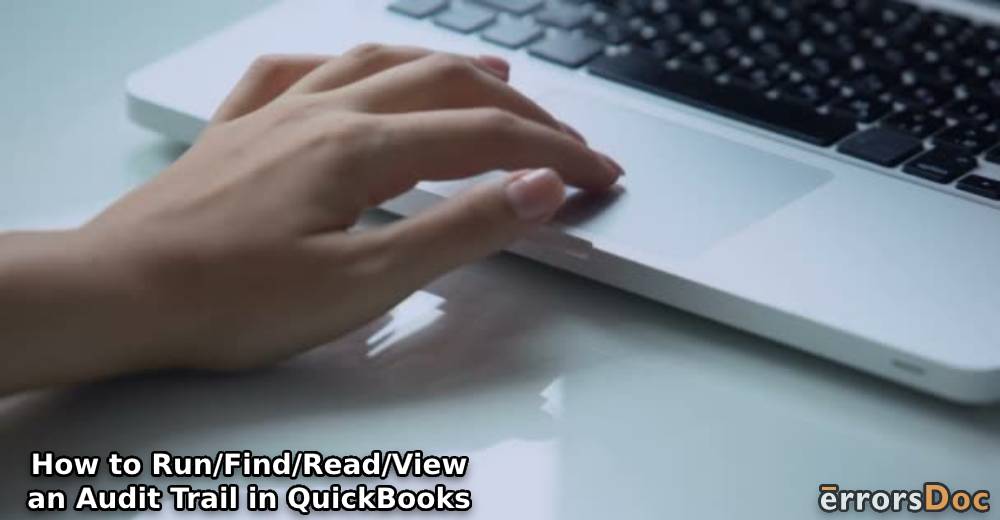Serving useful functions, the audit trail is a feature of the accounting software, QB. Prior to using it, it can be essential to understand how to see an audit trail in QuickBooks. There is an Audit History in the software through which the QuickBooks audit trail can be found. Once you locate it, you can run this feature. Understanding how this feature may not be very easy unless you know how to read it. Therefore, this knowledge should also be adopted by you. By adopting it, exercising this feature can help in understanding the main uses of it including access to the transactions edits, adjustments, etc.
How to Run an Audit Trail in QuickBooks?
An Audit Trail can be run in the QuickBooks software with the usage of the Preferences option. The Edit tab is to be chosen to use this option. You will see the Preferences dialog box appearing on the screen. If you want to, you may make changes in the Accounting Preferences section through the box. Then continue to run the trail.
- Click on “Edit”.
- Then tap on the “Preferences” tab.
- The dialog box of “Preferences” will pop up. You can modify your requirements in the “Accounting Preferences”.
- Press “Preferences Accounting Set”.
- After that, push the “Company Preferences” option.
- Put a tick beside the “Audit Trail” checkbox.
- Select “Ok” for calling QuickBooks and start running the trail.
Can You Find the Audit Trail in QuickBooks Desktop, Pro, Premier, and Enterprise?
Finding the audit trail in QuickBooks Desktop can be possible with the help of the Accountant and Taxes option. Using this option, the feature can be found in other versions too like QuickBooks Pro, Premier, and Enterprise. To get to this option, you need to look for the Reports button. On seeing the option, use it to access the Audit trail in QuickBooks Desktop.
- On the software’s menu, press “Reports”.
- Next, tap on “Accountant and Taxes”.
- Then select the “Audit Trail” option.
How to Read Audit Trail Report in QuickBooks?
It may be easy to find an audit trail or its report but you may need guidance to read the same. For reading it, you need to be familiar with the type of transaction. If you are finding the report and wish to read it, then you are likely to view certain headings in it. Understanding these headings can help you in reading this report.
- Begin by accessing the trail or QuickBooks audit trail report.
- After accessing it, notice certain headings that have been marked in bold.
- In the “Transaction Type” section, the following items can also be read:
- “Deposit”
- “Check”
- “Bill Payment”
While reading it, certain information may not be found relevant in the trail. Deleting it can always be suggested to do away with such information.
How to View Audit Trail in QuickBooks?
The knowledge of Audit History can help you understand how to see an audit trail in QuickBooks. This history enables you to directly view the trail and then proceed with its use.
To get to this history, you can first choose Recurring Transactions. Then pick a transaction and hit the More button. This button will reveal the Audit History and you can ultimately access the trail feature.
- Go to “Recurring Transactions”. Here, you can edit, add or modify any of the recurring transactions if you want to. You can have a look at the records for a specific date in “Audit History”.
Note: The following items can be monitored in Audit history:
- The person’s name who made the edits
- When the changes have been made
- What kind of edits have taken place
- Ensure that you have the right for viewing “Audit History”.
- Move to the transaction that is to be viewed.
- Then click on “More”.
- Press “Audit History”.
- “Audit Trail” will appear on the screen. Select the “Show All” tab for viewing more information.
- Tap on the “Compare” option.
After tapping on this button, you can view the QuickBooks Audit Trail and other information if available.
In Brief
Running the audit trail in QB can allow you to track all the modifications made in the data file. It can also help in tracking the deleted or lost transactions. Prior to running, how to see an audit trail in QuickBooks was looked at. The methods for finding and reading the trail and its report were also discussed.
